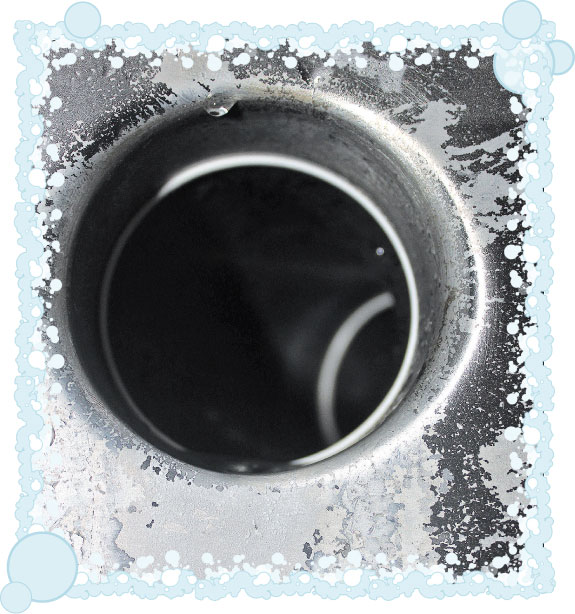Typical alkaline detergents are effective in water temperatures from 170°F down to 120°F and, in most CIP situations, that’s an acceptable range. However, when called to diagnose CIP system issues, we more often than not find that water temperatures are inadequate at the end of the cleaning cycle to fully clean the system. This situation is common when dairies expand their system while trying to get by with the same water heater. For these dairies, low-temperature detergents can be beneficial until an adequate heating system can be installed.
Declining temperatures mean rising PICs
Water in a CIP system starts losing heat the instant it enters the CIP system. As a result, while the water at the start of the wash cycle may be fine temperature-wise, it often cools to a level below this threshold by the end of the cycle.

Water temperatures above 120°F are generally recommended for CIP systems. Once the temperature dips below this level, however, standard detergents can no longer hold fats and proteins in suspension.
In other words, they can’t effectively emulsify and remove contaminants from CIP systems. As a result, PI counts can rise and milk quality can be compromised. The advanced chemistry of low-temperature detergents allows them to be effective at much lower water temperatures – down to 90°F.
The size of the system determines how much heat loss there is at any one point in the system. A large system combined with a water heater that is not big enough or is not working properly can result in below-recommended water temperature (at some point) in the system during the cleaning cycle.
Unfortunately, the problem is not easy to spot and you may not even look for it until the PI count starts to increase. This situation usually results from an inadequate volume of hot water reaching all parts of the system.
Inadequate hot water volume is especially common in large dairies or dairies that are expanding or making changes in their operations.
The replacement cost for water heaters that can handle larger CIP systems – in addition to the manual cleaning needs of a typical milking cycle – isn’t always a primary consideration when dairies expand capacity. Producers often find out after the fact that their hot-water-generating capability falls short of their CIP needs.
Short-term solutions with long-term implications
To remedy the problem of inadequate hot water, dairy farmers will often try a few ill-advised quick fixes which appear to correct the situation but generally only cause long-term problems:
Add more chemicals. A high concentration of chemicals runs the risk of “shocking” the system, which more rapidly degrades rubber, plastic and glass components – that is, all the parts in a vacuum bell or a collection jar.
Heat it up. Another common quick fix is heating the water to a higher temperature at the start of the cycle. This attempted fix wastes money by using more energy to heat the water beyond the effective range of the detergent. In addition, system components can be degraded just as they are with high chemical concentrations.
If upgrading the heating system is not feasible, try a detergent specially formulated for low-temperature situations. Such a product can remove scale and bacteria as effectively as high-temperature alkaline detergents but with water temperatures in a much broader range, typically from 170°F down to as low as 90°F.
This wider effective temperature range means less hot water required than other alkaline cleaners, providing a “safety zone” when your water heater doesn’t have the capacity to meet your CIP needs.
The science behind the solution
A low-temperature detergent can improve cleaning at any temperature. That’s because of the advanced, low-foaming surfactants it contains.
The surfactant reduces the surface tension of the cleaning solution so the detergents can do a better job of penetrating and removing the milkfat, regardless of the water temperature. It just simply offers better detergency, which can be a big help when there are mechanical issues affecting the CIP system.
When our company introduced its first low-temperature detergent 15 years ago, it was in response to a need among producers. A large base of dairy producers on small farms had trouble getting their water temperatures high enough.
Most of them found they could use a low-temperature CIP detergent to effectively clean their systems and produce premium-quality milk without replacing their water heaters. Over the long term, however, it’s advisable to pursue upgrades to ensure adequate volumes of high-temperature water are available to properly clean your system. PD
Robinson is the vice president of business development for A&L Laboratories . Click here to reach him by email.
PHOTO
A high concentration of chemicals runs the risk of “shocking” the system, which more rapidly degrades rubber, plastic and glass components – that is, all the parts in a vacuum bell or a collection jar. Photo courtesy of A & L Laboratories.





